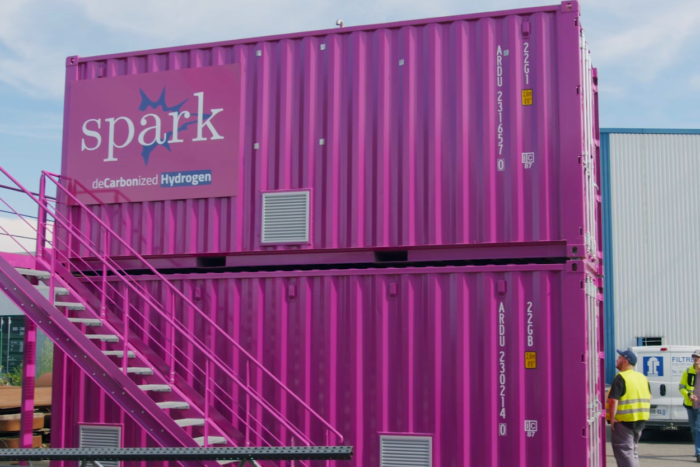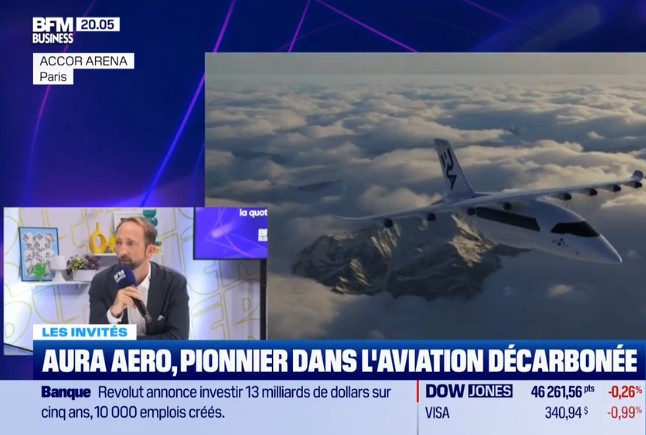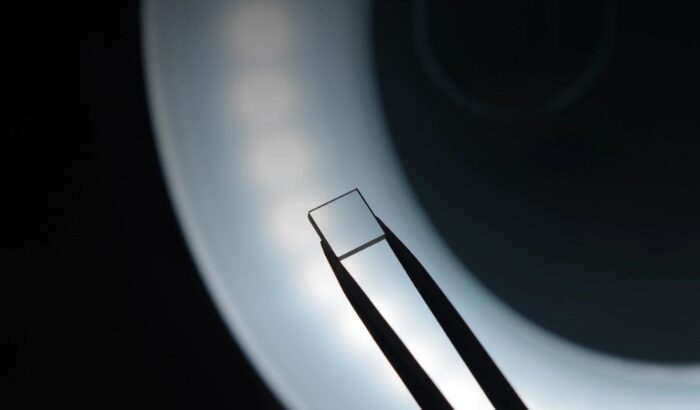Cailabs voit la lumière dans la transmission de big data depuis l’espace
13 novembre 2024
Read article by the Financial Times outlining how Cailabs has weaved its way through turbulence. Under the leadership of Jean-Francois Morizur, technology that is truly unique in the world is turned into industry and service.
https://www.ft.com/content/4307c389-f8b1-42f4-9623-256264b2c611
Innovacom is proud to be part of the journey from the start 🚀.
Cailabs sees the light on transmitting big data from space
French business started out in telecoms — until a client suggested a switch to optical communications

In 2023, Nasa reached a significant milestone in the race to transform how we communicate and share data. But, unlike its other projects, it went largely unnoticed.
From a satellite in space, the agency fired a tiny laser back to Earth which transmitted a huge amount of data:
200 gigabits per second, the highest data rate ever achieved by optical communications technology.
This transmission rate enabled the transfer of 3.6 terabytes of data to Earth in just 6 minutes. For comparison, the $10bn state of the art James Webb telescope, launched in 2021, can only transmit around 57 gigabytes of scientific data per day.
And the reason Nasa could transmit so much data, so quickly, was because it used light (optical communication), rather than the traditional radio frequency that is widely relied on today.
This has turned optical communications into a rapidly evolving sector, featuring both big name and new players — one of the most interesting of which is the French company, Cailabs.
It did not start out developing optical technology, however: it has been through multiple reinventions, and its CEO and co-founder, Jean-François Morizur, recalls how the company started and how it ended up where it is now.
“In 2013, we were dedicated to telecommunications,” he says. “We actually got the world record for fibre capacity with the Japanese telecommunications company KDDI. So we actually did well in fibre optics; increasing the amount of data you can cram into a single optical fibre. This was a long-term market.”
Cailabs then branched out from working with operators to making products that were dedicated to local networks.
This strategy proved successful and Cailabs sold thousands of units — which are still on its product line today. It was only after a conversation with a client that Cailabs looked to space.
“In 2019, one of our clients, NEC — a Japanese company that works on telecoms and aerospace — told us: ‘What you’re using for telecom, you should use for aerospace’,” explains Morizur. “It was for a very niche issue at that point in time, which was dealing with turbulence for lasers when they pass through the atmosphere.”
Morizur describes how Cailabs agreed to look into possibilities but says: “At the beginning, it was just a company replying to a very custom request from one of our customers.” When the product worked well, however, the company began to explore the market, to see if there was “meat on the bone”.
Investors were far from convinced. In a moment Morizur says he will always remember, a 2019 fundraising round valued the aerospace side of the business at zero. Just two years later, in a second fundraising round, investors were putting almost all of the group’s value on the aerospace side.
One of the reasons for this rapid shift was an important contract from the French Ministry of Defence, split between Cailabs and another Rennes-based company. The two businesses achieved a world first in high-speed optical satellite communications between a nano-satellite in low orbit and a commercial optical ground station.
Their work was part of France’s wider exploration of optical communication for military purposes. Armed forces around the world had been focusing on the possibility of using lasers to communicate instead of — or alongside — traditional radio frequencies. Optical communication not only allows faster transmission of more data but, unlike large radio waves, laser beams are narrow and more difficult to detect, intercept and disrupt.
At the start, Cailabs had been involved only in removing turbulence from lasers as they enter the atmosphere. However, the company decided to move up the value chain and build entire ground stations — where lasers beamed down from satellites are received. In 2022, Cailabs received its first orders for ground stations, and the company has now built seven.
It is expected to become a widely used technology. Iain Hughes, head of the National Space Innovation Programme at the UK Space Agency (UKSA) says: “We are likely to see a big shift to optical communication in orbit, as standard, by the start of the next decade, and increasingly from space to ground, with systems transmitting vast amounts of data to where it is needed, anywhere in the world. This promises much quicker information transfer, enabling real-time monitoring, better health services, and even internet gaming for millions more people.”
The UKSA is helping the UK drive that shift by funding schemes like Northumbria University’s development of a commercial laser optical communications system for small satellites.
But, in spite of Cailabs’ successful pivot into optical communications, it has not all been smooth sailing. Please use the sharing tools found via the share button at the top or side of articles.
As well as its failure to attract investor interest in 2019, Cailabs’ financial pressures mounted when it first moved into the aerospace sector, says Morizur.
“You need to seek market validation extremely quickly and you invest based on the market validation you already have,” he says. “In that situation, you cannot really trust yourself, because you can be passionate about something but then you can be blindsided by something you hadn’t seen in the market.”
Cailabs is not the only player in town. Industry giants such as Airbus and Safran are advancing in optical communications, and they have considerably more resources and governmental access than any start-up.
Morizur welcomes their competition but argues that the disciplined, risk-averse nature of these rival companies has allowed Cailabs to get ahead. Whether Cailabs remains there may depend as much on the reinvention of its competitors’ strategies as its own.
FINANCIAL TIMES / Callum Tennant
https://www.ft.com/content/4307c389-f8b1-42f4-9623-256264b2c611
à propos de CAILabs
Créée en juin 2013, spin-off du Laboratoire Kastler Brossel, la société CAILabs a développé une technologie innovante de traitement des faisceaux lumineux.
Depuis 2014, elle commercialise des produits innovants qui permettent d’augmenter le débit des fibres optiques. En 2015, l’opérateur japonais KDDI établit le record du monde de débit sur fibre optique à l’aide de composants CAILabs, et en 2016 la solution AROONA pour les fibres optiques LAN obtient de nombreux prix d’innovation dont le prix Digital-In-Pulse de Huawei.
Les solutions conçues et développées par CAILabs ont le potentiel pour toucher bien d’autres secteurs et filières industrielles comme l’aéronautique ou la fabrication additive avec des applications dédiées.






